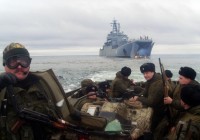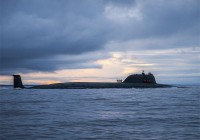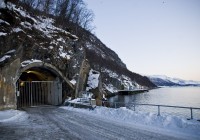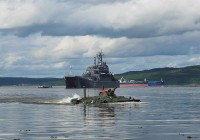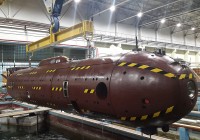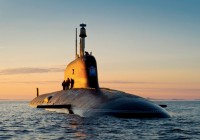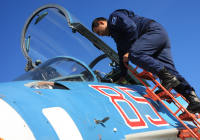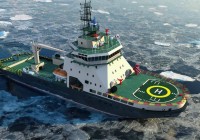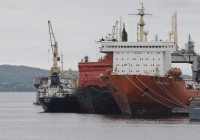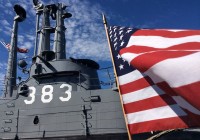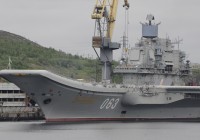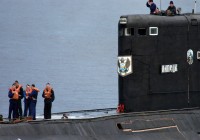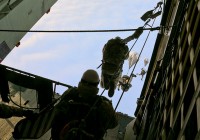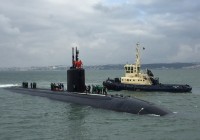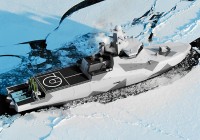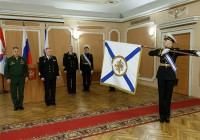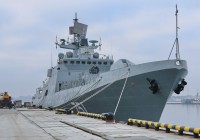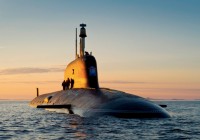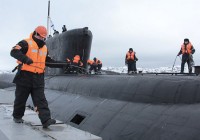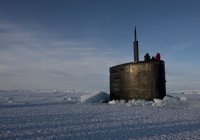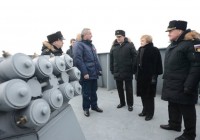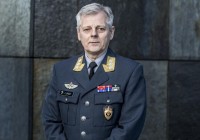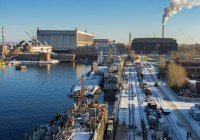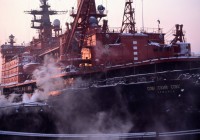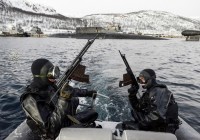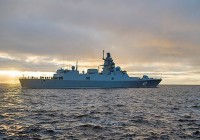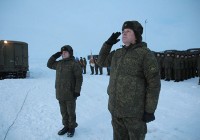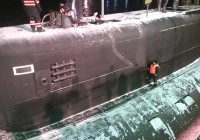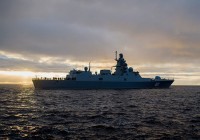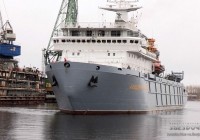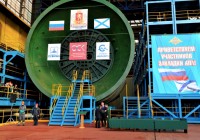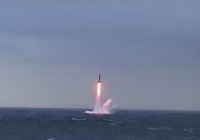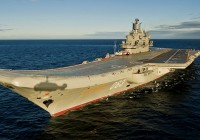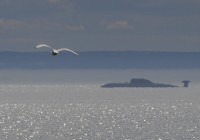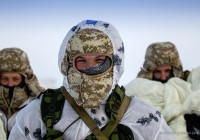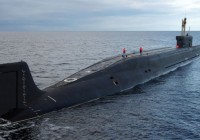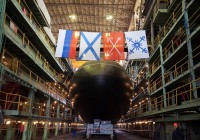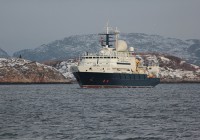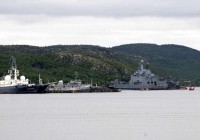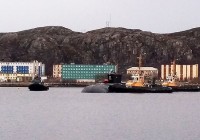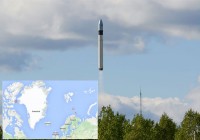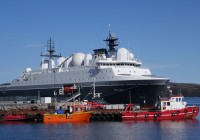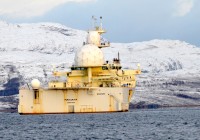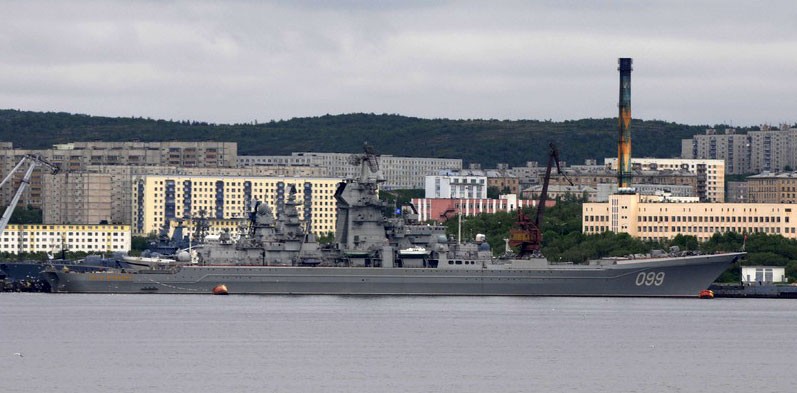
No breaks on Russia’s warship program, but experts question timeframes and social consequences
ADVERTISEMENT
«There is no doubt that Russia is willing to build the new warships, but realistic timeframes and scope of the program is another question,» says Katarzyna Zysk, Associate Professor with the Norwegian Institute for Defense Studies.
Since President Vladimir Putin in December 2013 ordered a constant military presence in Arctic waters, the Navy and ship building industry have presented updated plans for new vessels. To be based with the Northern fleet, the largest of Russia’s four fleets, many of the new warships will have Severomorsk on the Kola Peninsula as homeport.
Not only is the Navy aiming for ice-classed warships; a fleet of military nuclear-powered vessels with icebreaker capabilities could as well be in the pipe.
Warship that can cross the North Pole
«The issue of ice-class vessels is still under discussion with the military. But we can already say it will have a lot in common with the new [civilian] icebreakers LK-110,» says Valery Polovinkin, adviser with the Krilov State Research Centre to Izvestia.
LK-110 is Russia’s next-generation nuclear-powered super icebreakers currently in its design phase. They will be twice as powerful as the LK-60 class icebreakers currently under construction for Rosatomflot.
Chief constructor Aleksandr Ryzhkov says the LK-110 class will have no problem in any ice conditions. The vessels can «cross the North Pole in any direction, any time of the year, in any ice thickness,» he tells Izvestia.
ADVERTISEMENT
Arctic waters given high priority
Both the new nuclear-powered icebreakers and ice-classed warships will sail to protect Russia’s Arctic borders and security. As previously reported, four smaller and less powerful diesel-electric military ice-breakers, the first one named «Ilya Muromets», will be delivered to the Navy in the years to come.

Katarzyna Zysk explains to the Barents Observer that Russia’s long-term naval development program envisages for construction of a brand new Navy in three main stages.
«First, building ships with focus on the littoral zone with the Steregushchij class corvette as the main ship; second, constructing vessels intended for long-range operations, with new frigates of the Admiral Gorshkov class as the main asset, and at the third state, building a new class of destroyers.»
First new nuclear surface vessel since 1999
The new destroyers got much attention in Russian media last week, as Deputy Minister of Defense, Yuri Borisov, announced them to be nuclear-powered and armed with both laser- and electromagnetic weapons, Izvestia reports.
Today, the only nuclear-powered surface warship in operation is battle cruiser «Pyotr Velikiy» - the flagship of the Northern fleet since she sailed north from the year in St. Petersburg in 1999.
Destroyers of Project 23560 Leader-class [not to be confused with the Lider civilian next-generation nuclear powered icebreakers] is still in the design phase. The keel will be laid in 2018, the Navy says.
Struggles to implement constructions
«Frequent reports in the past few years have been announcing a start of works on it: for instance, in 2009 the construction of the first warship was to start in 2012 and be completed in four years. The program, however, has been constantly delayed and is still at the stage of design,» Katarzyna Zysk says.
She points to similar delays for other classes of Russian navel vessels, like the Admiral Gorshkov class frigates.
«Russia has been struggling with implementing the [naval development] program even at the first stages due to economic, financial, as well as structural problems in the military-industrial complex, which continues to struggle with corruption, ineffective use of resources and exorbitant prices, as well as waning expertise and professional skills,» Zysk tells.
She explains that there is no lack of interest and strong incentives to expand the Navy from the top political leadership, but adds that the future of the surface shipbuilding programs is built on fragile foundations.
«The government has been prioritizing warfare over welfare in the past few years, financing the military build-up on the expense of health budget, social spending and education. This comes with a high social price, as the steep fall in living standards has demonstrated.»
Shipbuilding industry has been hit hard by western sanctions following the annexation of Crimea. Vital supplies are cut off, such as gas turbine engines from Ukraine and diesel power units from Germany.
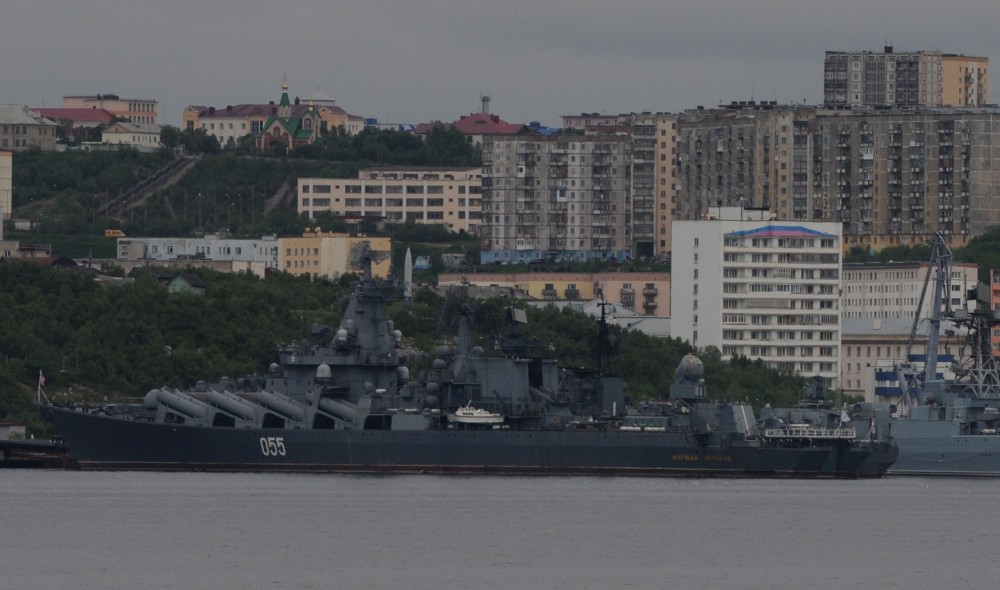
Bragging about new vessels is one thing, building them another
Senior Researcher Kristian Åland with the Norwegian Defense Research Establishment says to the Barents Observer there is still much uncertainty associated with Russia’s new fleet of naval vessels.
«The uncertainty relates to factors such as acquisition costs, rate of delivery, technological solutions, and the final number of vessels in each class,» Åtland says.
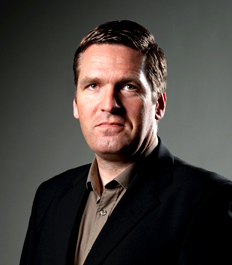
He is not convinced the new class of destroyers will be seen as soon as the Russian navy brags about.
«Assuming that construction starts before the end of this decade, the first vessel of this class is unlikely to be completed before 2025, at the earliest. The military icebreaker project may also be delayed, due to technological or financial constraints,» Kristian Åland argues.
When celebrating the Navy’s Day last weekend in St. Petersburg, Severomorsk, Vladivostok and Sevastopol, nobody hinted about any delays in the program.
«Russia’s Navy does not plan to reduce the program of constructing warships, Deputy Commander for Weapons, Vice-Admiral Viktor Bursuk told Izvestia.
He even added new projects to the list, including a helicopter carrier equivalent to the Mistral-class Russia didn’t got from France because of Europe’s ban on weapon export after Moscow’s annexation of Crimea in 2014. Another giant-project in pipe, still according to Vice-Admiral Bursuk, is a new aircraft carrier.
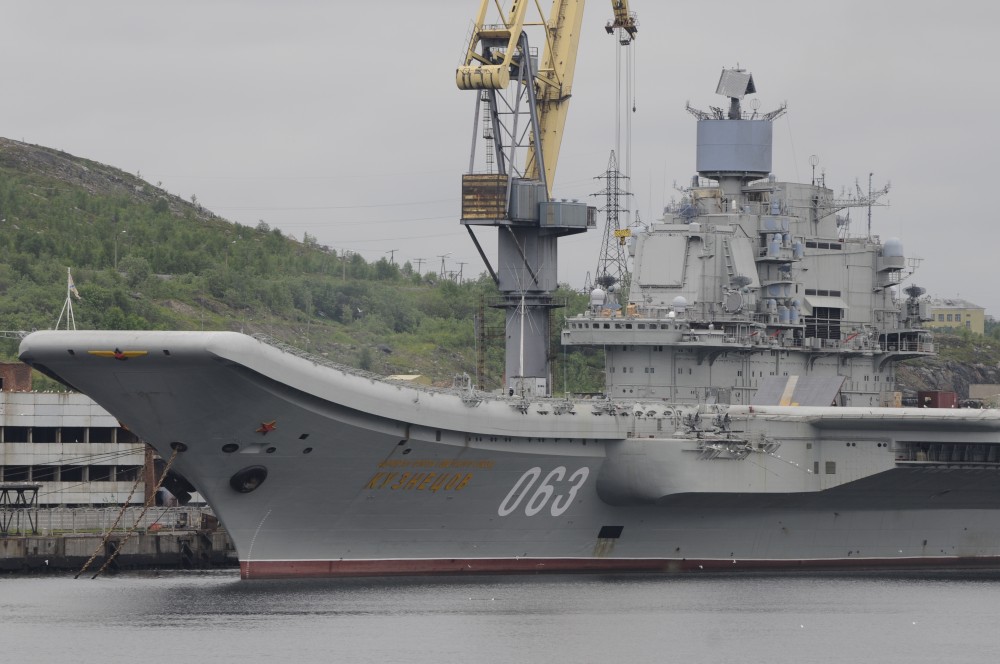
Arming towards bankruptcy?
Including the multi-billion dollar expensive renewal of the submarine fleet, the naval program is by far the most expensive investments currently taking place in Russia. Defense spendings have doubled in the past decade with 3,14 trillion rubles, or 4 percent of GDP, to the military this year, a study by Stockholm International Peace Research Institute reads.
A debate has been going on in the Kremlin about whether the country can afford to increase military spendings. In September 2011, Finance Minister Alexei Kudrin got sacked by then-Prime Minister Vladimir Putin because he openly said Russia could not afford increasing the military budget to the levels now seen.
Since 2011, the oil-price has fallen deeply. So has Russia’s economic outlook.
Last week, first Deputy Minister of Finance, Tatyana Nesterenko, said that the Russian economy is in the middle of a storm.
«If nothing changes, we will have no more reserves by the end of next year, no salaries to pay, we will have serious economic problems,» Nesterenko to TASS news agency.
She called on serious economic reforms, but without mentioning spendings on the military.
Katarzyna Zysk with the Norwegian Institute for Defense Studies is currently working on a project on Russian military strategy. She is worried about the current path.
«If Russia will end up not being able to pay salaries, the naval construction and other military projects will obviously be negatively affected as well. Broader consequences such as political instability, domestic, as well as in terms of foreign policy, are among likely outcomes.»



